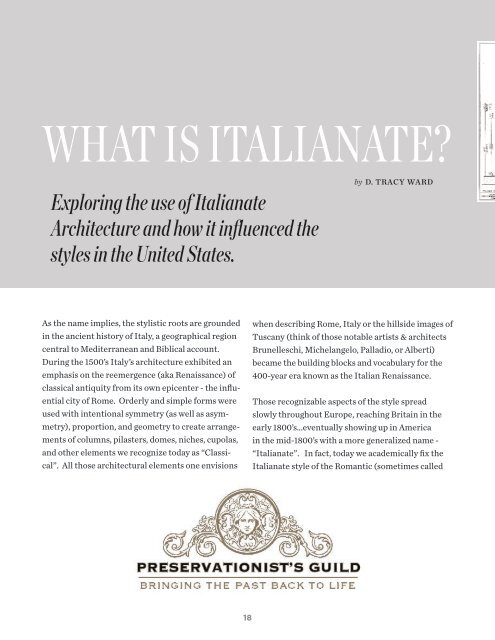You also want an ePaper? Increase the reach of your titles
YUMPU automatically turns print PDFs into web optimized ePapers that Google loves.
WHAT IS ITALIANATE?<br />
Exploring the use of Italianate<br />
Architecture and how it influenced the<br />
styles in the United States.<br />
by D. TRACY WARD<br />
As the name implies, the stylistic roots are grounded<br />
in the ancient history of Italy, a geographical region<br />
central to Mediterranean and Biblical account.<br />
During the 1500’s Italy’s architecture exhibited an<br />
emphasis on the reemergence (aka Renaissance) of<br />
classical antiquity from its own epicenter - the influential<br />
city of Rome. Orderly and simple forms were<br />
used with intentional symmetry (as well as asymmetry),<br />
proportion, and geometry to create arrangements<br />
of columns, pilasters, domes, niches, cupolas,<br />
and other elements we recognize today as “Classical”.<br />
All those architectural elements one envisions<br />
when describing Rome, Italy or the hillside images of<br />
Tuscany (think of those notable artists & architects<br />
Brunelleschi, Michelangelo, Palladio, or Alberti)<br />
became the building blocks and vocabulary for the<br />
400-year era known as the Italian Renaissance.<br />
Those recognizable aspects of the style spread<br />
slowly throughout Europe, reaching Britain in the<br />
early 1800’s…eventually showing up in America<br />
in the mid-1800’s with a more generalized name -<br />
“Italianate”. In fact, today we academically fix the<br />
Italianate style of the Romantic (sometimes called<br />
18




